This article was co-authored by Dr. Niall Geoghegan, PsyD. Dr. Niall Geoghegan is a Clinical Psychologist in Berkeley, CA. He specializes in Coherence Therapy and works with clients on anxiety, depression, anger management, and weight loss among other issues. He received his Doctorate in Clinical Psychology from the Wright Institute in Berkeley, CA.
There are 10 references cited in this article, which can be found at the bottom of the page.
wikiHow marks an article as reader-approved once it receives enough positive feedback. In this case, 85% of readers who voted found the article helpful, earning it our reader-approved status.
This article has been viewed 38,662 times.
An anxiety attack, or panic attack, is a physiological and psychological response that at times can have a behavioral component. Sometimes panic attacks happen just once during a lifetime and may be a response to severe stress or change. Sometimes panic attacks are linked to certain situations, while other times panic attacks are a part of a larger disorder such as an anxiety or panic disorder.[1] No matter why you have a panic attack, the feeling and experience of the panic attack is the same and you can recognize them when you have them.
Steps
Recognizing Physical Symptoms
-
1Concentrate on your breathing. Many people who are experiencing an anxiety attack feel as if they're choking. This can be one of the scariest symptoms of an anxiety attack. You feel like you cannot breathe and that, in turn, can increase your level of panic.
- In such situations it is very important to do your best to draw slow, deep breaths. As your body and your mind constantly influence each other, breathing slowly sends signals to your mind that trick it into a state of relaxation.[2] Frantic breathing will just tell your brain that you are in danger and will increase your panic.[3]
-
2Distract your brain from feelings of nausea. Feeling like you might throw up is a common sensation when in a shocking and stressful situation. What you need to do in such occasions, in order to send calming signals to your brain, is sit down comfortably and try breathing deeply. Nausea due to anxiety is not stomach related and can dissipate quickly.[4]
- Avoid closing your eyes, as this will make you concentrate on the feeling of nausea even harder. Instead, focus on somebody else or on a detail of your surroundings. Doing so will help distract your brain and will help the nausea go away faster.
Advertisement -
3Feel your heart pounding. A pounding heart and shooting pains in the chest, neck, or head is common with anxiety attacks. This symptom resembles a heart attack very closely and so it can be incredibly scary. In this scenario, lie down and breathe deeply. The pain will go away when your body becomes more relaxed.[5]
- If you do not have a serious heart condition, you can rest assured that it is in fact an anxiety attack coming on. Still, the best course of action here is to lie down.
-
4Notice chills or hot flashes. Sudden feelings of hot flashes or cold chills are a common physical symptom a panic attack. You might start sweating heavily or tremble, as this is caused by adrenaline being released. These symptoms usually go away in a few minutes.
- Some people tend to get very hot while others get very cold; it all depends on the person. Luckily, it rarely leads to more serious consequences, like fainting, because it usually passes within minutes.[6]
-
5Massage parts of your body that feel numb. You may feel this as a "pins and needles" feeling. Like other symptoms, this feeling is very unpleasant but passes rather quickly. What you should try to do is sit down, breathe deeply, and rub the part of your body that is feeling numb. This will improve blood circulation and will send signals to your brain telling it to focus on that part of the body, easing the symptoms.[7]
- It is important to remember that these symptoms do not mean you are seriously ill, but rather that your stress levels have become too high and these symptoms are your body’s way of showing you that you need to work on reducing stress.
-
6Take note when the symptoms appear. A panic attack can come on suddenly and appear to be unrelated to anything. It can also come on due to fear or worry about what might happen if you have a panic attack. [8] If you have never had a panic attack before, you may think you are having a heart attack or think something very serious is happening. Many people may call 911 or visit the ER when they get their first anxiety attack, since the symptoms can be scary.
- About 25% of people who visit the ER with chest pain are actually experiencing a panic attack.
-
7Get treated. If you do visit the ER during a panic attack, the doctor will give you an EKG to monitor your heart to rule out a heart attack or other heart complication. He or she may also provide medication to help you calm down.
- Panic attacks will usually reach their peak, or the most intense symptoms, within 10 minutes of the episode. Most anxiety attacks will end within 20-30 minutes.[9]
Recognizing Mental Symptoms
-
1Feel a sense of depersonalization. This is the sensation of not being in your own body. You might feel like you are observing the situation from a distance or that you don’t know what is real and what isn’t. This symptom of anxiety attacks is an indicator for very strong fear and frustration and it can be a very unreal and inexplicable feeling.
- In other words, reality will feel entirely different. This makes it doubly hard to come back to the present moment. If you do sense this depersonalization, try to bring yourself back by concentrating on your breathing or the sensation of an object in your hands. Is it hot or cold? Sharp or soft? Being in the moment can make this symptom easier to deal with.[10]
-
2Pay attention to feelings of "derealization." This is the feeling as though you are in a dream. The situation, along with your emotions, thoughts and physical experiences might seem like it is not real, but rather a memory or a nightmare. This feeling occurs during the stages of very strong affect but is likely to go away in a few minutes.[11]
- The method of handling this is similar as with depersonalization. Focus on the objects in front of you or the people you are with. Focus on your sensations of touch, sight, and sound. Those are constants that do not change.[12]
-
3Know that you're not going crazy. Anxiety attacks cause a myriad of symptoms that are very unusual compared to everyday experiences. Those feelings, especially the emotional and mental symptoms, can make you feel as though are not normal, hallucinating, or are going crazy. This is a very scary sensation that might leave you feeling terribly helpless. This is normal. You are not going crazy; you are simply experiencing an anxiety attack.
Understanding Common Causes
-
1Consider heredity. Although the exact reason why some people are more susceptible than others to experiencing panic attacks is unknown, researchers believe there are several contributing factors. Hereditary is one of the possible causes. This is the passing on of certain traits from parents to children. Studies have shown that children of parents who suffer from some type of anxiety disorder are more likely to have an anxiety disorder later in life. Additionally, research shows that if one twin of an identical set has an anxiety disorder, the probability of the other twin also having an anxiety disorder ranges from 31-88 percent. [15]
-
2Think about possible childhood circumstances. Childhood circumstances can also contribute to anxiety. Although further research is needed, some studies suggest that children were more likely to have an anxiety disorder later in life if: they were raised in households whose parents had an overly cautious view of the world, had parents who set very high standards or were overly critical, or had parents who denied or suppressed their childrens’ feelings or self-assertion.[16]
-
3Reduce stress. The last common cause of anxiety attacks is cumulative stress, or stress experienced overtime. Chronic stress and exhaustion can be a result of cumulative stress, which is how it greatly contributes to anxiety or panic. Serious life events such as a divorce, bankruptcy, or children leaving the home, can all contribute to anxiety when experienced together or in close succession. It also happens when there seems to be no break from changes and stress.[17]
- Other serious life events that may trigger a panic attack are traumatic events such as car wrecks. Situations like this are extremely stressful on the body and mind and can trigger a physiological response to stress in the form of a panic attack. [18]
-
4Look for other causes. It is possible to have previous conditions, such as a mitral valve prolapse or hypoglycemia, that can trigger a panic attack.[19] Sometimes use of illicit drugs, medications, or vitamin deficiencies can also trigger a panic attack, and increase your risk of developing a panic disorder.
Getting Treatment
-
1Recognize an underlying condition. There are several different types of anxiety disorder which have a panic component, but just because you’ve had a panic attack does not mean that you have a disorder of any kind.
- However, if you notice that your panic attacks are more intense, are lasting longer, or are more frequent, these are signs that you may have something else going on other than a normal stress or anxiety response to stressors in your life. [20]
-
2Consult a therapist. Anxiety attacks can be a symptom of a larger anxiety disorder. If the fear of having a panic attack is keeping you from your normal routines, such as not leaving the house or avoiding your son’s basketball games, these are signs that anxiety or panic is starting to keep you from functioning at your full capacity.[21] In these situations, you should consult a therapist for help.[22]
- Treatment for anxiety or panic differs depending on exactly which type of anxiety disorder you have. However, there are some general techniques that a therapist will teach you. She may take you through relaxation training and teach you to promote positive lifestyle changes such as exercise. She may also help you challenge your unhelpful thoughts and behaviors that perpetuate your anxiety.
- Some therapists may help you by desensitizing you to physical symptoms of panic so you are no longer fearful, which will help you to not cause future panic attacks due to fear.[23]
-
3Take medication. In some cases, medication may also be helpful to control panic. In most cases, it should not be the only treatment and should be combined with therapy. Medications used to help control panic include antidepressants, which are taken daily and provide long term help. You can also take benzodiazepines, which are fast-acting medications used during or in anticipation of oncoming panic.[24]
- Examples of antidepressants prescribed for panic include Prozac, Zoloft, and Lexapro. Common benzodiazepines prescribed include clonazepam, lorazepam, and alprazolam.
-
4Treat adolescent anxiety attacks. The signs and symptoms of panic attacks are the same for children and adolescents as they are for adults. If a panic disorder is diagnosed, psychotherapy would be the first treatment option over medication for children, unless the disorder and panic is severe.
- Psychotherapy for children is similar to therapy for adults, but tailored in ways that can manage and understand the information and interventions.
- Cognitive behavioral therapy is used to help children and adolescents challenge and change irrational thought patterns that are reinforcing panic. Additionally, children and adolescents learn relaxation techniques to help them manage anxiety and panic outside of the therapy office.
- As a parent, it is hard to know how to help your child who is experiencing a panic attack, and it may seem beneficial to reason with your child and tell them that nothing is actually wrong. However, it is more helpful to acknowledge your child's fear reaction and physiological responses and well as how uncomfortable the experience can be.[25]
References
- ↑ Bourne, E.J. (2010). The anxiety and phobia workbook (5th ed.). Oakland, CA: New Harbinger Publications, Inc.
- ↑ Dr. Niall Geoghegan, PsyD. Clinical Psychologist. Expert Interview.24 July 2019.
- ↑ http://www.adaa.org/understanding-anxiety/panic-disorder-agoraphobia/symptoms
- ↑ http://www.psychologytoday.com/blog/anxiety-help/201109/panic-attacks-what-they-are-and-how-stop-them-0
- ↑ https://www.healthdirect.gov.au/anxiety-attack-and-panic-attack
- ↑ http://www.adaa.org/understanding-anxiety/panic-disorder-agoraphobia/symptoms
- ↑ http://www.adaa.org/understanding-anxiety/panic-disorder-agoraphobia/symptoms
- ↑ Bourne, E.J. (2010). The anxiety and phobia workbook (5th ed.). Oakland, CA: New Harbinger Publications, Inc.
- ↑ http://www.helpguide.org/articles/anxiety/panic-attacks-and-panic-disorders.htm
- ↑ http://www.adaa.org/understanding-anxiety/panic-disorder-agoraphobia/symptoms
- ↑ https://my.clevelandclinic.org/health/diseases/9791-depersonalizationderealization-disorder
- ↑ http://www.adaa.org/understanding-anxiety/panic-disorder-agoraphobia/symptoms
- ↑ Dr. Niall Geoghegan, PsyD. Clinical Psychologist. Expert Interview.24 July 2019.
- ↑ https://www.betterhealth.vic.gov.au/health/conditionsandtreatments/panic-attack
- ↑ Bourne, E.J. (2010). The anxiety and phobia workbook (5th ed.). Oakland, CA: New Harbinger Publications, Inc.
- ↑ Bourne, E.J. (2010). The anxiety and phobia workbook (5th ed.). Oakland, CA: New Harbinger Publications, Inc.
- ↑ Liana Georgoulis, PsyD. Licensed Clinical Psychologist. Expert Interview. 6 September 2018.
- ↑ Bourne, E.J. (2010). The anxiety and phobia workbook (5th ed.). Oakland, CA: New Harbinger Publications, Inc.
- ↑ http://www.helpguide.org/articles/anxiety/panic-attacks-and-panic-disorders.htm
- ↑ Bourne, E.J. (2010). The anxiety and phobia workbook (5th ed.). Oakland, CA: New Harbinger Publications, Inc.
- ↑ Dr. Niall Geoghegan, PsyD. Clinical Psychologist. Expert Interview.24 July 2019.
- ↑ Liana Georgoulis, PsyD. Licensed Clinical Psychologist. Expert Interview. 6 September 2018.
- ↑ Bourne, E.J. (2010). The anxiety and phobia workbook (5th ed.). Oakland, CA: New Harbinger Publications, Inc.
- ↑ http://www.helpguide.org/articles/anxiety/panic-attacks-and-panic-disorders.htm
- ↑ http://www.helpguide.org/articles/anxiety/panic-attacks-and-panic-disorders.htm
About This Article
To tell if you're having an anxiety attack, monitor yourself for symptoms like difficulty breathing, nausea, pounding heart, chills, or hot flashes. You might also experience depersonalization, or the sensation that you're outside of your body. Additionally, you might feel as though you're in a dream. If you think you're experiencing a panic attack, sit or lie down and try your best to take slow, deep breaths. By taking deep breaths, you'll help your body calm down, and your physical and mental symptoms should start to subside. For advice from our co-author, like how to get professional treatment for anxiety attacks, keep reading.





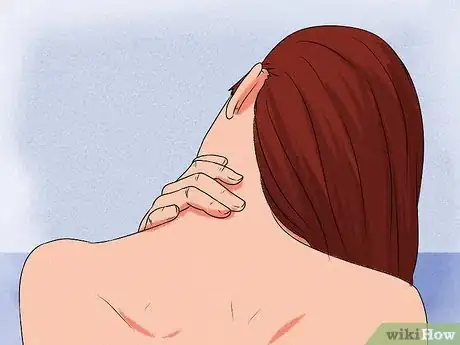
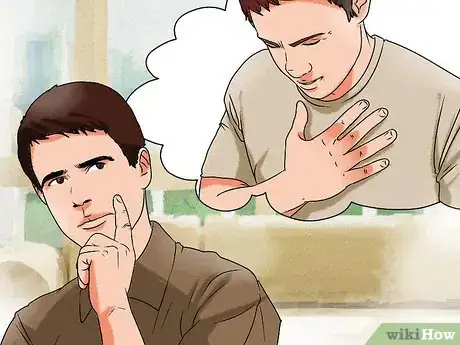

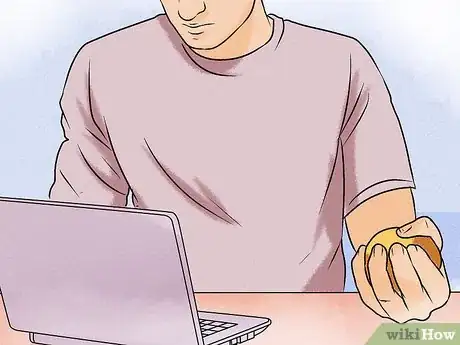




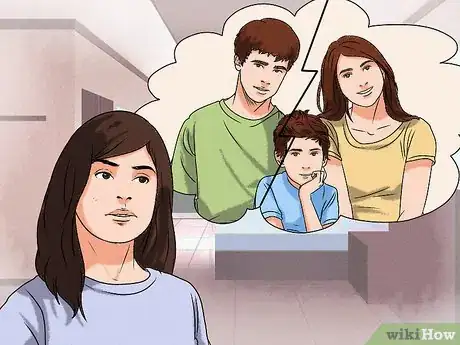











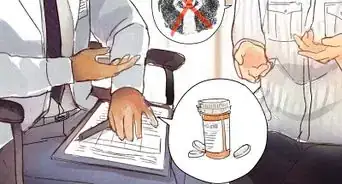
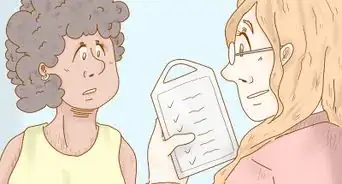
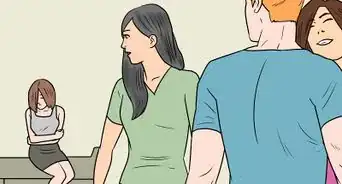

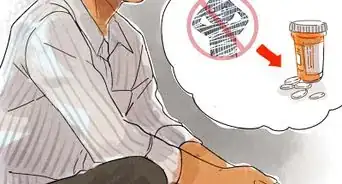



















































Medical Disclaimer
The content of this article is not intended to be a substitute for professional medical advice, examination, diagnosis, or treatment. You should always contact your doctor or other qualified healthcare professional before starting, changing, or stopping any kind of health treatment.
Read More...